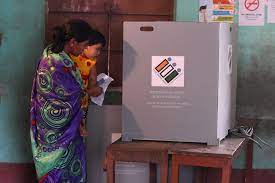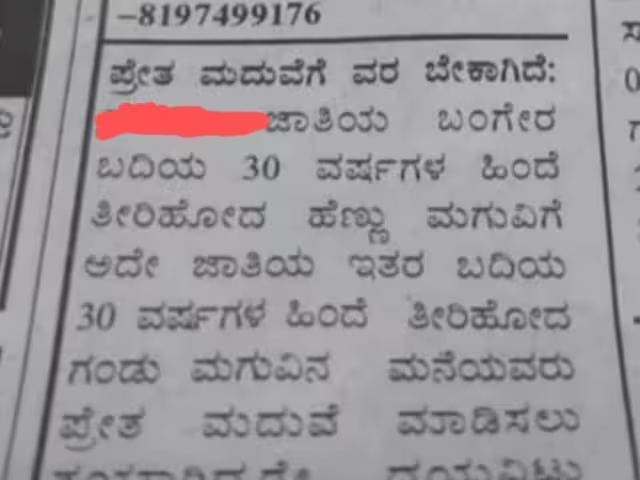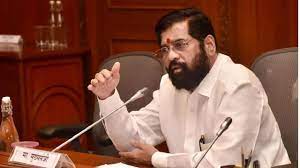One Nation One Election Rumors: Is It Legally Possible And What Is Its History?
As a commission headed by former president Ram Nath Kovind was established by the Central Government to assess the viability of “One Nation, One Election,” conjecture about it stirred discussion once again. The committee was established to provide a report on the current election system in India, where it is said that the nation is in a “permanent campaign” mode all year round.

The committee’s objective is to “examine and make recommendations for holding simultaneous elections to the Lok Sabha, State assemblies, municipalities, and panchayats, keeping in view the existing framework under the Constitution of India and other statutory provisions”
The basic premise of ONOE is to coordinate the dates of the Lok Sabha, Rajya Sabha, Municipalities, and Panchayat elections throughout the whole nation. The committee is also entrusted with formulating timetables and stages for the election.
Even though the action has caused political commotion, the Modi administration has previously discussed ONOE. The BJP has always had it on their agenda, starting in 2014. Cost-cutting is cited as one of the main justifications for synchronizing the elections in the arguments in favor of it.
What is the procedure for implementation, and is it legally feasible?
The primary worry with regard to ONOE is the potential for early dissolution of administrations, either as a result of loss of confidence or defections. What would happen if the federal or state governments both fell apart in the middle of their terms? Would the state then have to hold new elections, or would the president’s rule take effect?
The legal experts believe that changing a few constitutional provisions is the only way to put it into effect.
Leading constitutional scholars have argued that five consecutive revisions to the Constitution—Articles 83, 85, 172, 174, and 356—are necessary to achieve this objective. According to media sources, each of these reforms has to get support from 50% of state legislatures in addition to two-thirds of Parliament to pass.
There are practical difficulties to take into account even if certain numerical criteria are reached. If this change were to take place soon, concerns about what would happen to state assembly in states whose terms are about to expire, such Rajasthan, Madhya Pradesh, and Chhattisgarh, emerge. Further complicating matters is the situation in Karnataka, where a new legislature has just been created.
The newly appointed committee, which also includes Amit Shah, has been tasked with laying out the legal scrutiny guidelines and suggesting changes to the constitution’s Representation of People Act 1950 and Representation of People Act 1951, as well as other legal adjustments that must be made in order to hold simultaneous elections.
The Law Commission held a two-day consultation in 2018 to discuss the idea of simultaneous elections. Only four political groups, the Telangana (now Bharat) Rashtra Samithi, the AIADMK, the Samajwadi Party, and the Shiromani Akali Dal, endorse the notion, nevertheless. Nine parties rejected the idea, including the Goa Forward Party (a BJP ally), the Trinamool Congress, the Aam Aadmi Party, the DMK, the Telugu Desam Party, the CPI, the CPI-M, the Forward Bloc, and the JD(S). They said it was “undemocratic” and went against federalism’s tenets. Even yet, the CPI-M said that it went against the Constitution.
One Nation, One Election (ONOE), which is based on the idea that the whole nation operates as a one entity and runs counter to the spirit of Article 1 which sees India as a “Union of States,” seems to be at conflict with the idea of “federalism.”
The ONOE agenda is not new.
The simultaneous vote for the Lok Sabha and state legislatures was a tradition in India in the years 1952, 1957, 1962, and 1967. This trend, however, changed when state administrations were dismissed by the Congress party, which was in charge at the federal level. As a result, since 1951, the President’s rule has been enacted 115 times.
One Nation One Election acquired popularity thanks in large part to LK Advani’s efforts.
A legal committee led by Justice Reddy advocated holding concurrent elections in 1999.
This conclusion was reaffirmed in a report by the parliamentary standing committee in 2015, which made the case that good governance was hampered by the lack of simultaneous elections.
Prime Minister Narendra Modi expressed support for the notion in 2016. A working paper from the NITI Aayog in 2016 was followed by one from the law commission in 2018, both of which supported the idea of “One Nation, One Election.”
Does the Election Commission possess the necessary capabilities to oversee individual elections?
The Election Commission of India determined that holding simultaneous elections would need a substantial investment in Electronic Voting Machines and Voter Verifiable Paper Audit Trail (VVPAT) devices during its earlier investigation of this topic. It would be expensive to upgrade the infrastructure so that elections could be held simultaneously.
The present group will also evaluate the needs for logistical assistance, including the number of EVMs, VVPATs, and other resources required to hold such simultaneous elections. They will also decide how to identify voters in elections for the Lok Sabha, legislatures, municipalities, and panchayats by using a single electoral register and electoral identification cards.







